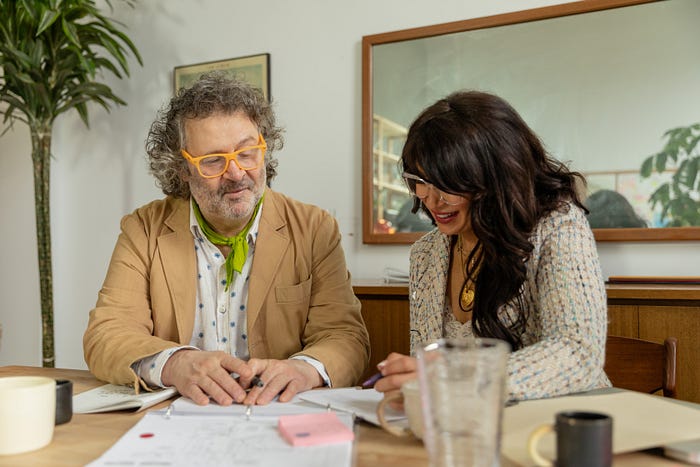

Follow these 7 Key Steps to Design a High-Performing MVP for Your Clients. (Star...
source link: https://uxplanet.org/follow-these-7-key-steps-to-design-a-high-performing-mvp-for-your-clients-e7b46e5e0827
Go to the source link to view the article. You can view the picture content, updated content and better typesetting reading experience. If the link is broken, please click the button below to view the snapshot at that time.

Follow these 7 Key Steps to Design a High-Performing MVP for Your Clients. (Start to end)

When it comes to product development, the concept of an MVP (Minimum Viable Product) is crucial. An MVP is a product that has just enough features to satisfy early customers and get feedback that can be used to improve the product in the future. It’s a way to test the market and see if there is a demand for the product before investing a significant amount of resources into it.
The importance of MVP in product development cannot be overstated. Before fully committing to a product, it lets companies test their ideas and make any changes that are needed. This not only saves time and money but also increases the chances of success for the final product.
The purpose of this blog is to guide clients in designing their MVP. I will describe a step-by-step approach to creating an MVP that meets the needs of the target market and achieves the goals set by the client.
- Define the target market

The first and most important step in creating an MVP is determining who it is intended for. This step is about figuring out who the audience is, what their pain points are, and what their needs and goals are. Research is an important part of this step because it helps designers learn more about the target market and make a product that meets the needs of that market.
One way to learn about the target market is to survey and talk to people who might use the product. This will help designers figure out what users want, what hurts them, and what they want to achieve. Also, looking at existing data like market research and the products of competitors can give valuable information about the target market.
Once the target market is clear, designers can make a Product Requirements Document (PRD) that lists the MVP’s target market, core features, and goals for future reference. This document is used as a guide throughout the design process to make sure that the MVP stays in line with the needs and goals of the target market.
2. Decide the core features

The next step is to decide which parts of the MVP are most important. This means figuring out which features are important and need to be in the MVP and which ones aren’t. It’s important to remember that the MVP should only have one core feature that solves the user’s problem. This core feature should be the most important part of the MVP, and the design process should be centred around it.
When deciding which features to put first, designers should also think about the MVP’s ability to grow and change in the future. This means that the MVP should be made with the idea that it could grow and get better in the future. This will let the MVP change over time to meet the needs of the target market as they change.
3. The design process

Once the core features are decided, designers can start making low-fidelity wireframes and user flow diagrams to see how the MVP designs will work. With these wireframes, you can get a general idea of how the MVP will look and work. They let designers try out different layouts, navigation, and how users move through the site. This step is important to make sure the MVP is easy for the target market to use and understand.
Then, high-fidelity wireframes and prototypes can be made to get a better idea of how the MVP will work for users. These wireframes give a better idea of how the MVP will look in the end and let designers test it with users. It’s important to include the client in the process and get their feedback on the interactive prototype. This feedback can be used to make any changes to the design of the MVP before it goes live.
4. Test and iterate

An important step in the process is having users test the MVP. This lets the designers make sure the MVP meets the needs of the users and solves their problems. User testing can be done in a number of ways, including through interviews with users, surveys, and usability testing.
In user interviews, you talk to potential users one-on-one to get their feedback on the design and functionality of the MVP. You can get feedback from a larger group of users through surveys. Usability testing is a method in which users are given specific tasks to do while using the MVP. This lets designers watch how users act and get feedback in real-time.
Once feedback has been collected, designers can look at the data and use it to make any changes to the MVP that are needed. This can include changes to the look, how it works, and how the user moves through the site. It’s also important to work with developers to make sure that the MVP works well. This means working closely with developers to make sure the MVP is made to meet the needs and goals of the target market.
5. Measuring success

Once the MVP is up and running, it’s important to see how well it meets its goals and makes the target audience happy. To keep track of the MVP’s performance, key performance indicators (KPIs) should be chosen. These can be things like how many users you get, how engaged they are, and how many of them you keep.
Acquisition metrics measure how many people use the MVP, engagement metrics measure how long people use the MVP, and retention metrics measure how many people use the MVP again. By keeping an eye on these metrics, designers can see how well the MVP is doing and find places where it could be better.
Users should also be asked for feedback on a regular basis so that problems can be fixed. This can be done by using surveys, interviews, and user testing to get feedback. To figure out how well the MVP works, you should also keep an eye on user engagement and retention. This can include keeping track of how many users come back to the MVP, how long they spend on it, and what they do on it.
By collecting and analysing this data, designers can see how well the MVP meets the needs of the target market and find places where it could be improved. This will let designers make changes to the MVP to make it work better and make sure it keeps meeting the needs of the target market.
6. Defining next steps

After the MVP is released, designers need to figure out how to get more people to use it and how to get it to market. This includes figuring out the best ways to market the MVP, like through social media, paid ads, or influencer marketing. After the MVP is launched, there should also be a plan for tracking and analysing its performance. This means keeping track of the MVP’s performance against the key performance indicators (KPIs) and looking for ways to improve.
Also, a plan for the product’s future development should be made, taking into account what the client wants. This roadmap should show planned updates and new features that are in line with the changing needs and goals of the target market. This will help make sure the MVP keeps meeting the needs of the target market and stays useful in the market.
7. Build a relationship

Keeping the lines of communication open with the client is a key part of making a successful MVP. This means that the MVP’s progress and performance will be checked on and reported on regularly. This will help keep the client in the loop and make sure they know about any problems that may come up. It is also important to talk to the client about any worries they may have and help them find a solution.
The key to making a successful MVP is to build a long-term relationship with the client by being reliable and trustworthy. A strong working relationship with the client can help make sure that the MVP stays in line with their goals and the needs of the target market.
Designers should listen to what the client wants and be ready to change the MVP as needed. This means being open to feedback and ready to change the MVP based on what people say. Designers can make sure that the MVP is successful and meets the client’s needs by building a good working relationship with the client.
Also, designers can build trust and dependability by keeping the lines of communication open, giving regular updates, and being responsive to the needs of the client. This will make it more likely that the client will be happy with the final MVP and want to work with the designer again in the future.
Conclusion
In conclusion, an MVP is an essential part of product development. Before fully committing to a product, it lets companies test their ideas and make any changes that are needed. By following a step-by-step approach, companies can create an MVP that meets the needs of the target market and achieves the goals set out in the Market Requirements Document.
It’s important to remember that the MVP is not the final product but rather a test version of it. It's important to keep getting feedback and analyzing data to make sure that the product is meeting the needs of the target market and reaching the goals set out in the Market Requirements Document.
Overall, MVP is an important step in developing a product, and it should be done in a strategic way to improve the chances that the final product will be a success.
Recommend
About Joyk
Aggregate valuable and interesting links.
Joyk means Joy of geeK